Shisui Hotel Review: Wonderful Stay Right Next To Nara Park
Shisui, A Luxury Collection Hotel opened at the end of 2023, offers a 5-star experience that blends traditional Japanese aesthetics with modern luxury. We enjoyed the calming atmosphere and the convenience of being right next to Nara Park and major attractions. Here’s our detailed review of our stay in May 2024.
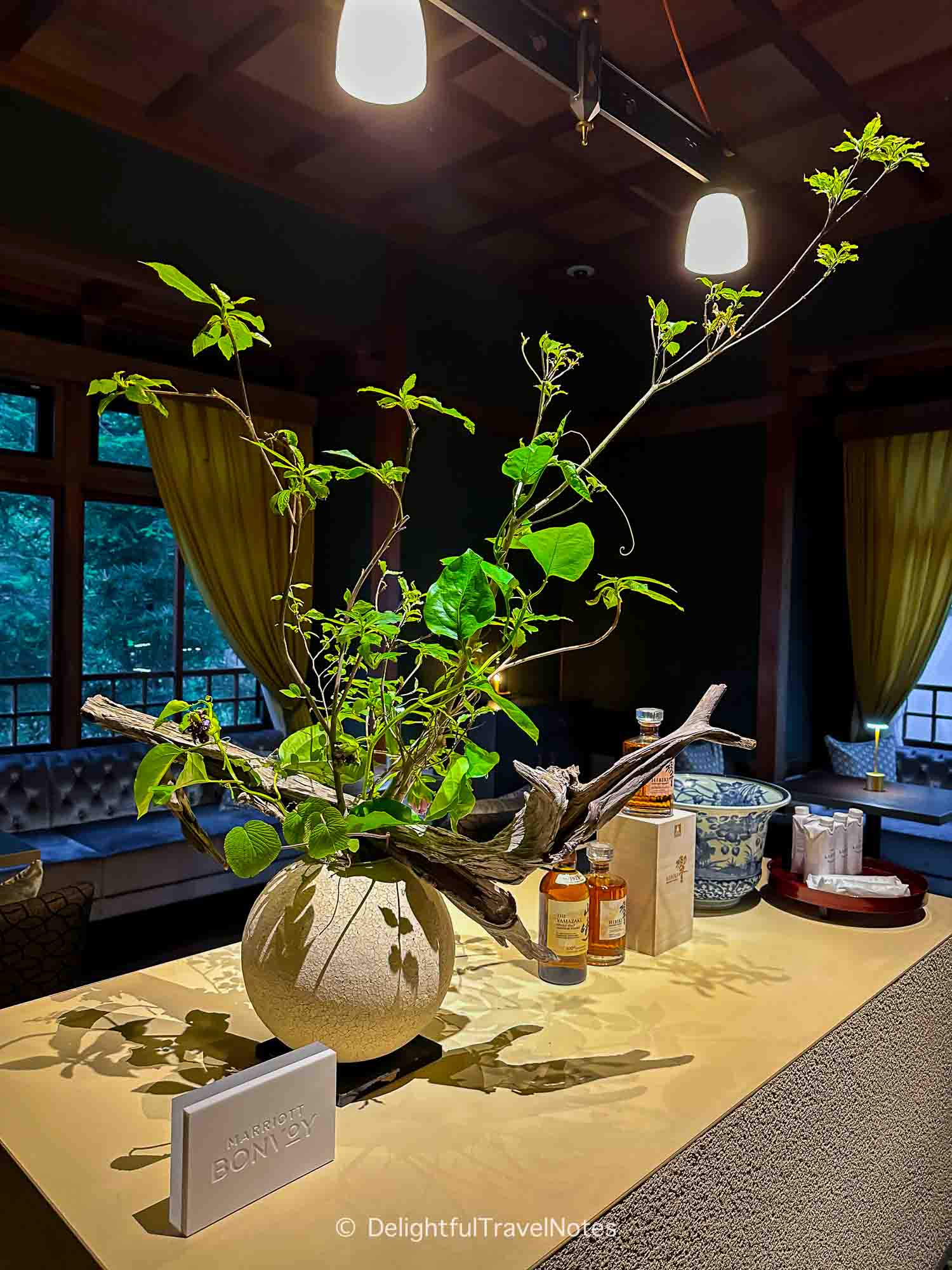
While most international travelers visit Nara as a day trip, we highly recommend an overnight stay especially if you love scenic places, open green spaces, and historical sites. We happened to have a Marriott free night award left before our second trip to Japan. After reviewing our itinerary and stumbling upon Shisui, we decided to use our award at this new property.
At that time, it had quite a few negative reviews on Google due to being new and experiencing some service issues. However, we booked with the expectation that the service would improve by the time of our visit. We were glad we decided to give it a try and wished we had spent an additional night there.
Check Prices & Availability
Booking.com Agoda.com
Convenient Location for Exploring Nara
Quick Links
The location of Shisui is very convenient for sightseeing in Nara. We were just steps away from Nara Park, and walking to major attractions such as Todai-ji (a World Heritage Site) and Kofuku-ji took just 5-10 minutes. We particularly loved the walk from the hotel to the back gate of Todai-ji through quaint streets and a peaceful part of Nara Park where many deers chilled out.
Shisui is also within walking distance of Nara Bus Terminal and Kintetsu Nara Station. However, if you arrive at the Kintetsu Station with multiple suitcases, I suggest taking a short taxi ride to the hotel.
Arrival & Check-in
We took a train from Osaka Station to Nara Station, arriving at Shisui around 11:30 am after a short taxi ride. The hotel entrance is a bit low-profile and unassuming with little signage which was totally fine with us. I think this understated approach is quite common in traditional Japanese establishments, particularly ryotei.
A staff member efficiently invited us to the guest lounge and offered welcome drinks. She informed us that we wouldn’t be able to check into our room until 3 pm, but we were pleasantly surprised to learn that we had been upgraded from a standard room to a room with a private onsen.
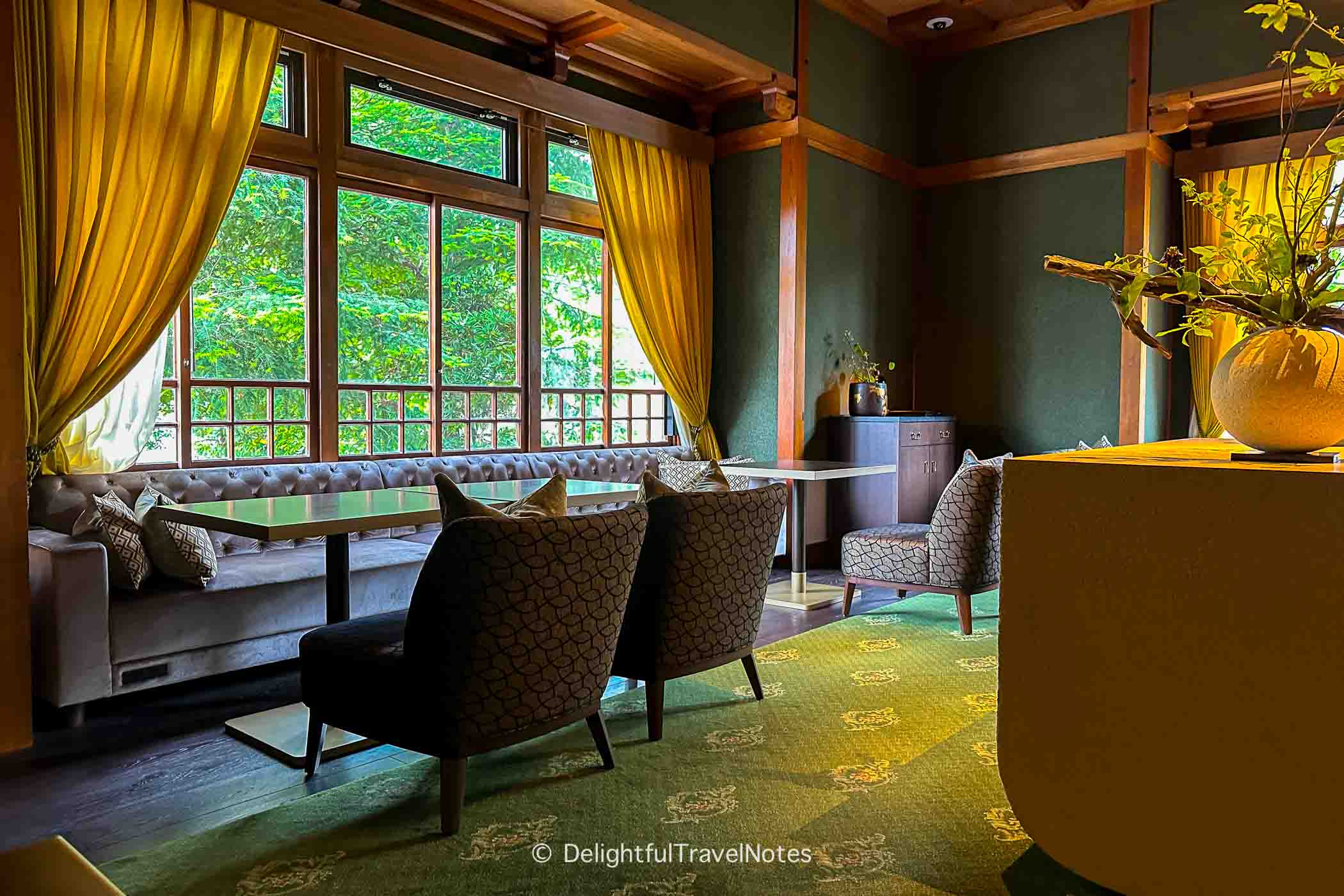
Hotels in Japan are often quite strict with check-in times, and although we’ve experienced some exceptions, we know it is the norm. It was great to hear that they gave us a room upgrade, especially considering it was like two levels up for an award stay. This upgrade was likely due to our Gold status with Marriott and the hotel’s new promotional period. At the time of our booking, the cash rate for their standard room was around $550.
So overall, we had a pleasant impression upon arrival. The traditional interior was beautiful, giving the hotel a cozy and personalized feel, more like at a ryokan over a city hotel.
A Beautiful Property with History & Characteristics
After lunch and some sightseeing, we came back a little past 3 pm and were greeted by a very friendly and welcoming gentleman. He was delighted to know that we were from Vietnam as he enjoyed making Vietnamese summer rolls with fresh herbs from his garden.
He walked us through several areas in the main building and told us a bit about its history as the former residence of the Governor of Nara Prefecture. There was a small room where the Japan-US Security Treaty was signed in 1951.
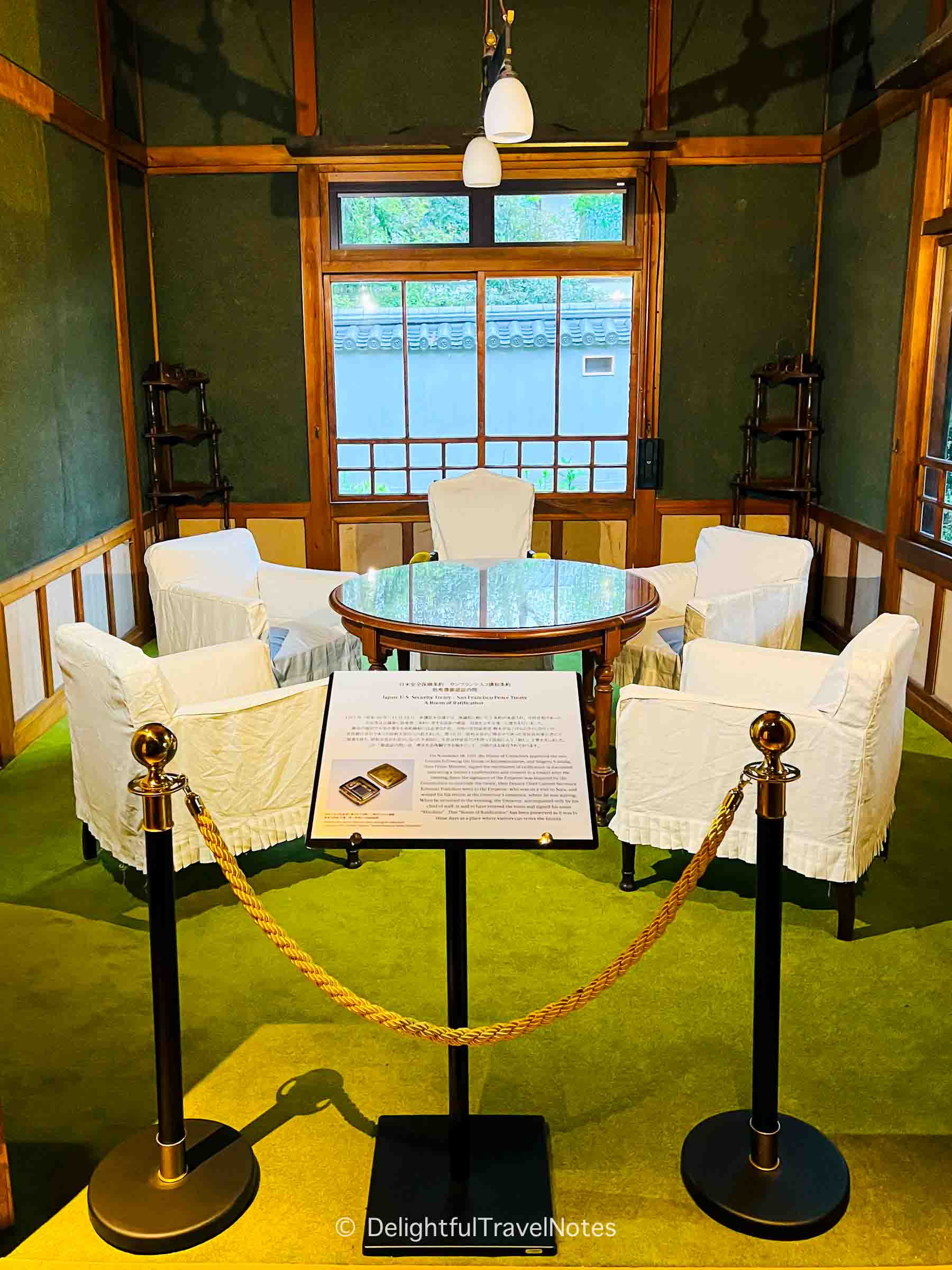
We also caught a glimpse of the breakfast room which was beautiful as it overlooked a Japanese garden. We always appreciate how Japanese architecture seamlessly incorporates garden views into indoor spaces as it gives us a sense of peace and relaxation.
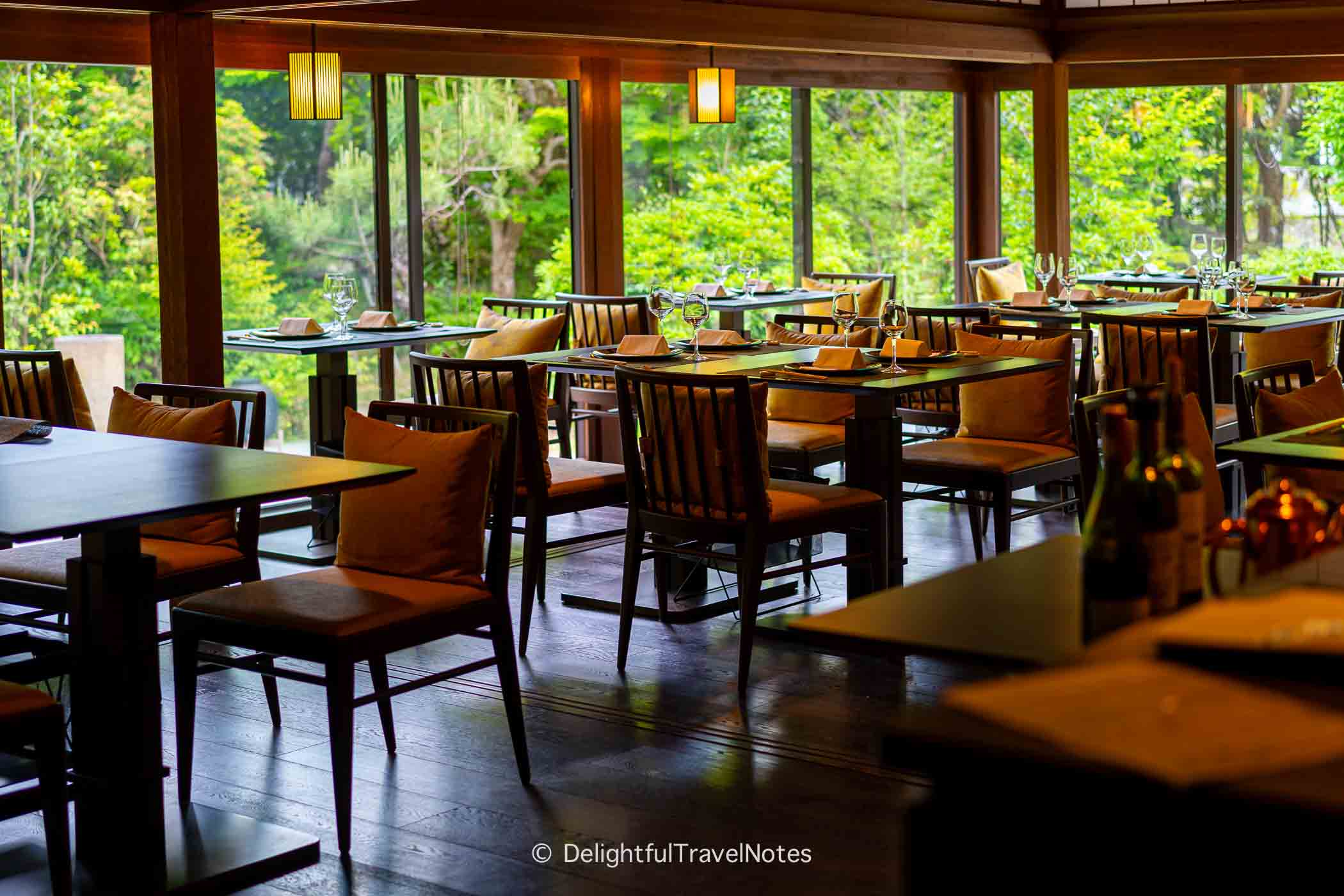
We were then led to the guest room wing, which consists of two buildings across a small street from the reception building. He showed us the spa area and the gym area. The gym was quite small with few equipment. Shisui has only over 40 guest rooms and I think not many guests plan to use the gym.
While the main building with the reception, lounge and restaurant is historic, the guest room buildings are contemporary with a minimalist style. Each building has two floors and access is key card controlled.
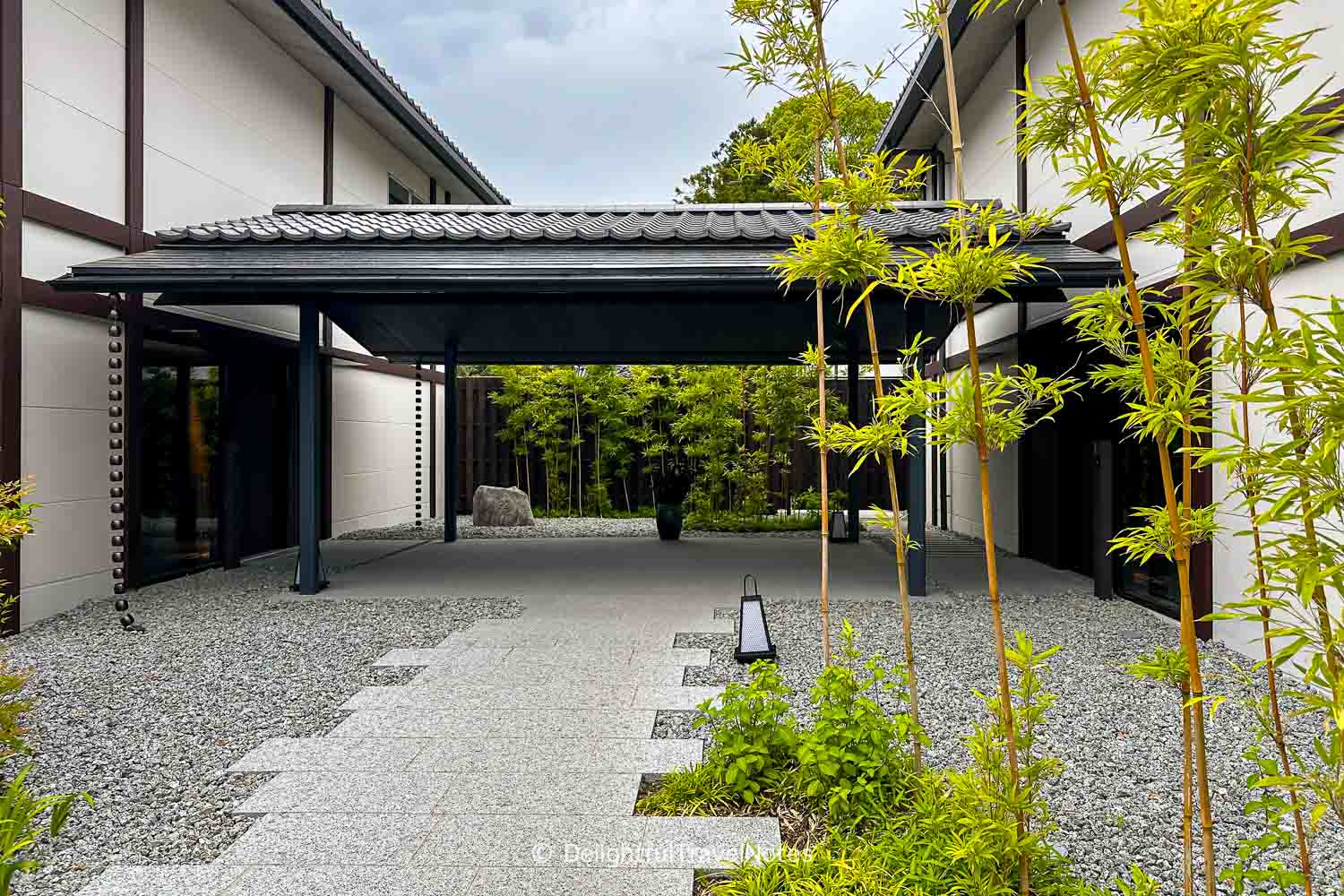
Shisui Deluxe Room with Onsen Bath
We finally reached our room which was on the second floor and our luggage was already in the room. We didn’t see a dedicated luggage rack or space which would be nice to have though.
This room is 41sqm/441sqft, which was comfortable enough for us. The toilet is in a separate powder room near the entryway and wardrobe while the bedroom faces the bathroom which has a vanity, shower and onsen (no toilet). The bathroom overlooks a greenery area outside.
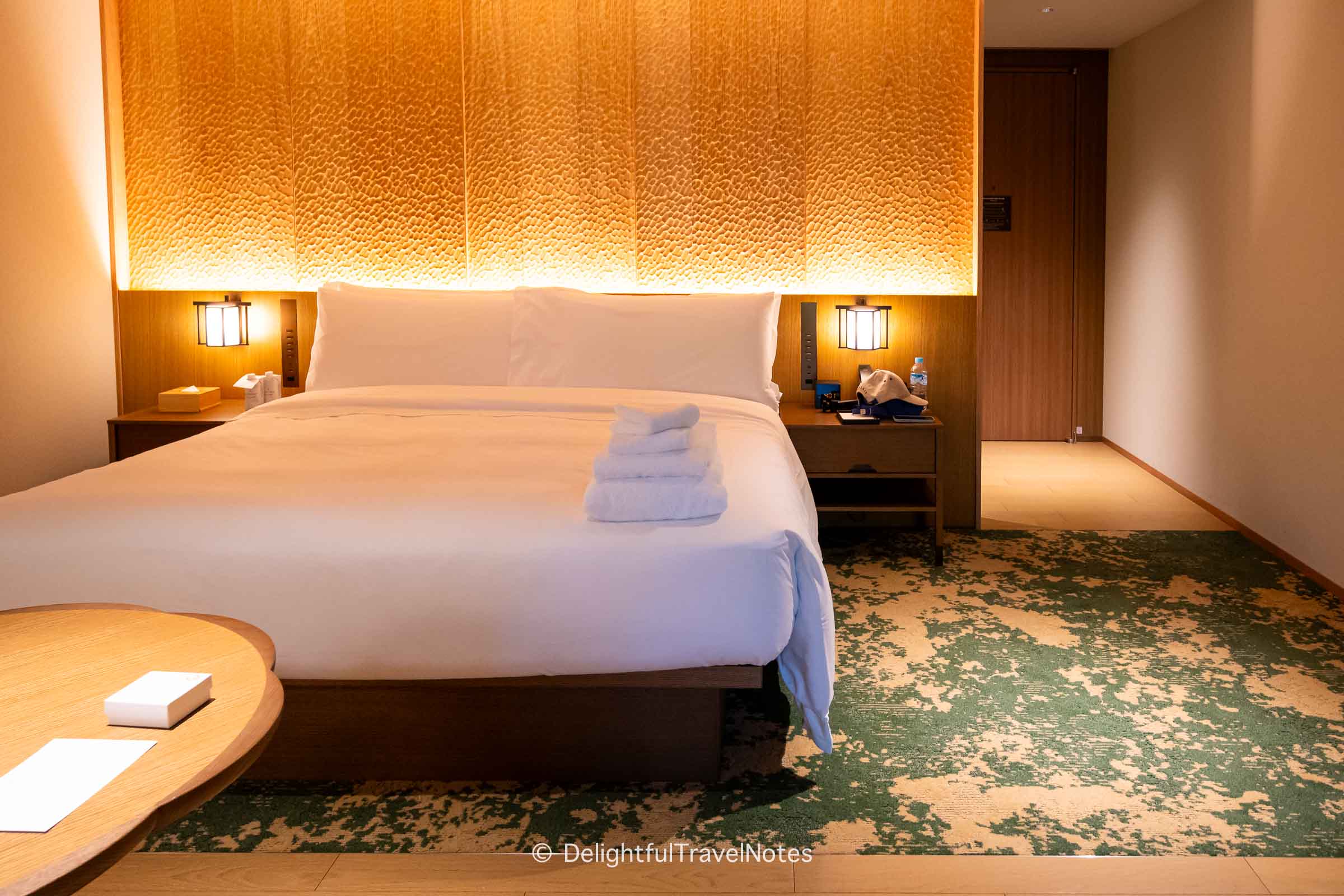
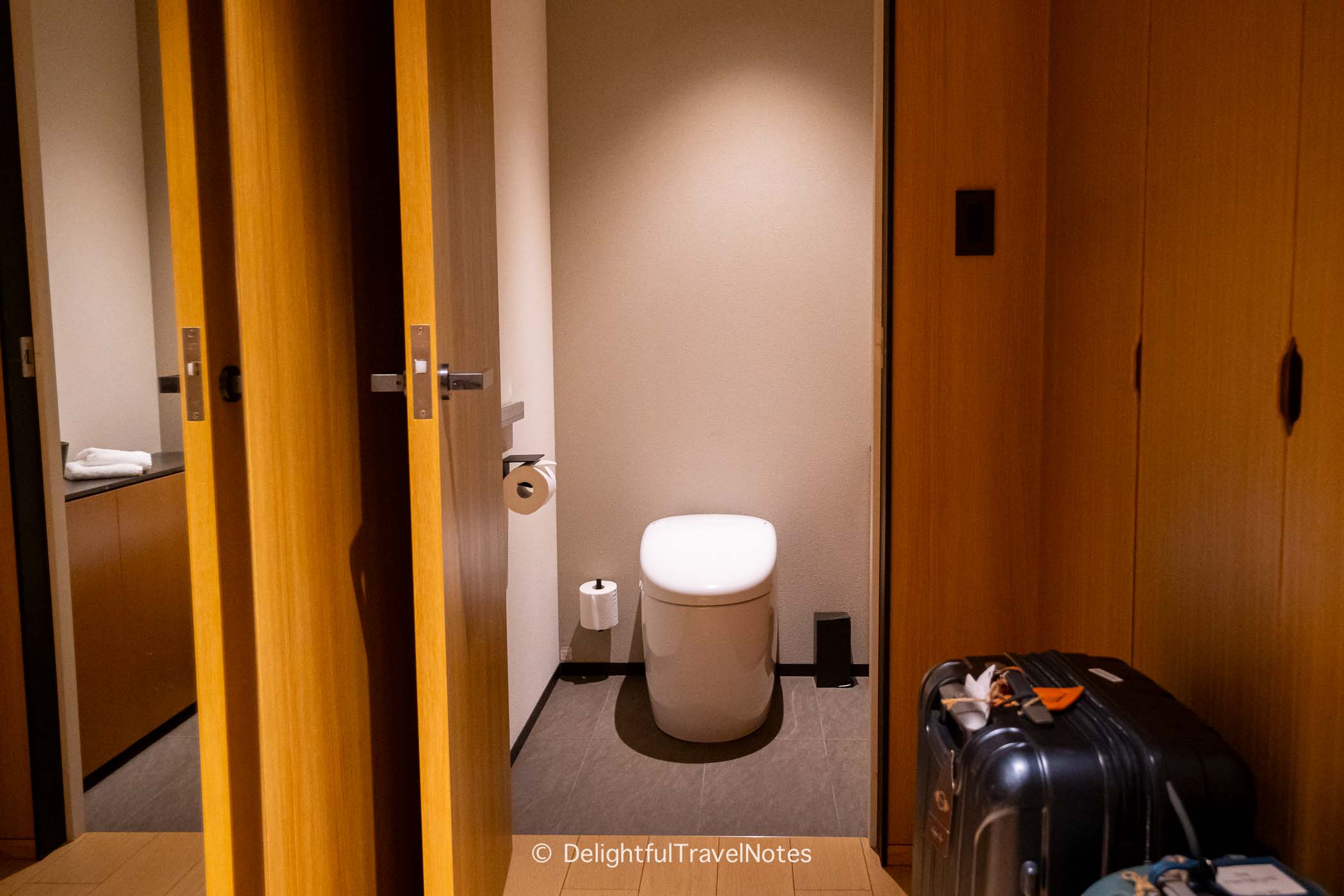
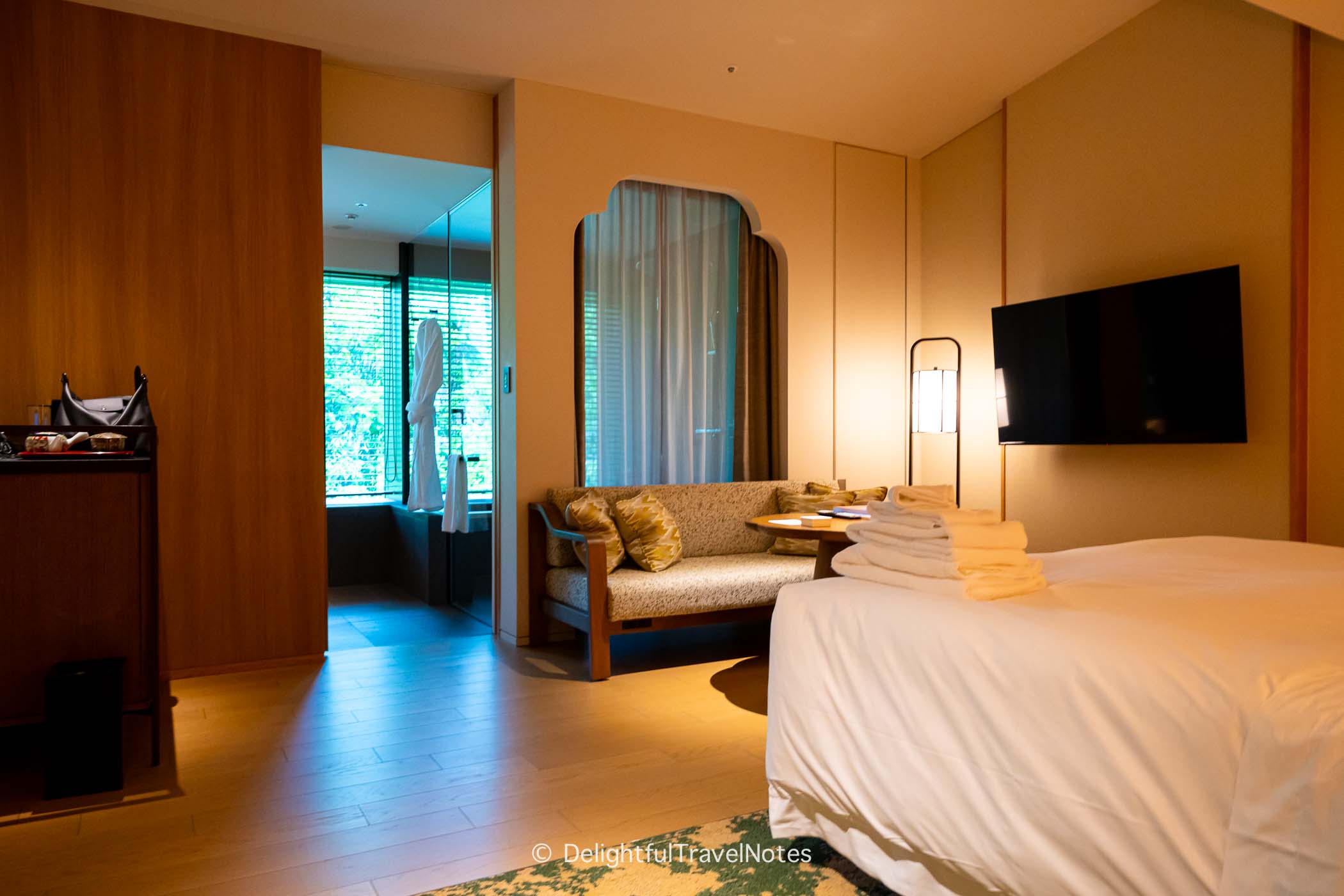
The layout of our room allows the shower and onsen to have lush garden views. However, the sleeping area doesn’t have immediate windows, so to enjoy natural light and views, we had to look through the bathroom. This setup somewhat limits the amount of natural light that reaches the bedroom. For a short stay, we didn’t mind it, except when we relaxed on the sofa, we faced the beds instead of being able to look outside.
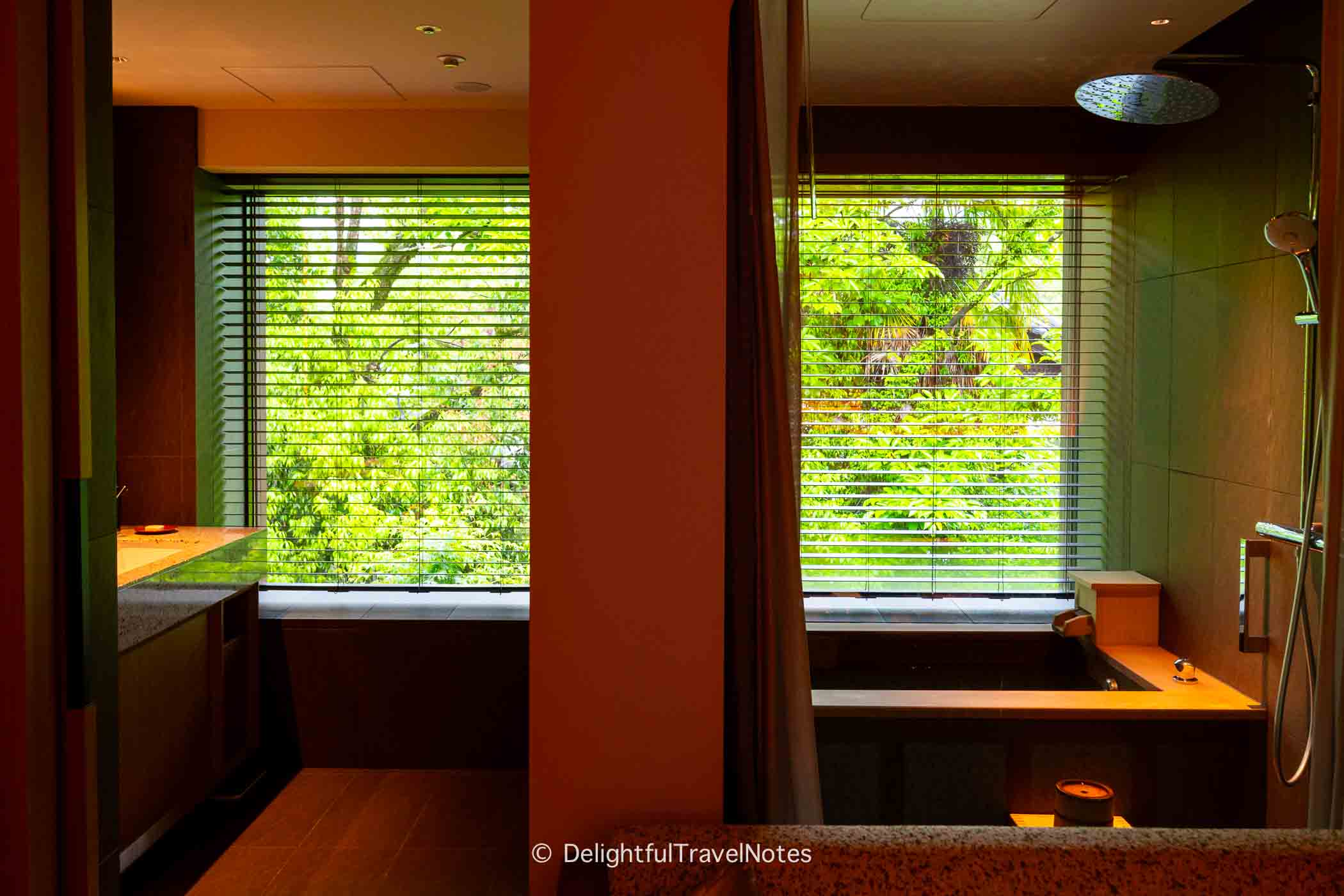
The onsen bath features a spacious tub with constantly circulating water. They told us that the water came from a natural underground source. However, it didn’t have the onsen smell (somewhat sulfuric) like what we experienced at Madoka no Mori ryokan in Hakone last year. Instead, I could smell some chlorine. So I think the water probably didn’t have the same mineral properties like at specialized hot spring areas. It still felt quite rejuvenating after taking a bath though.
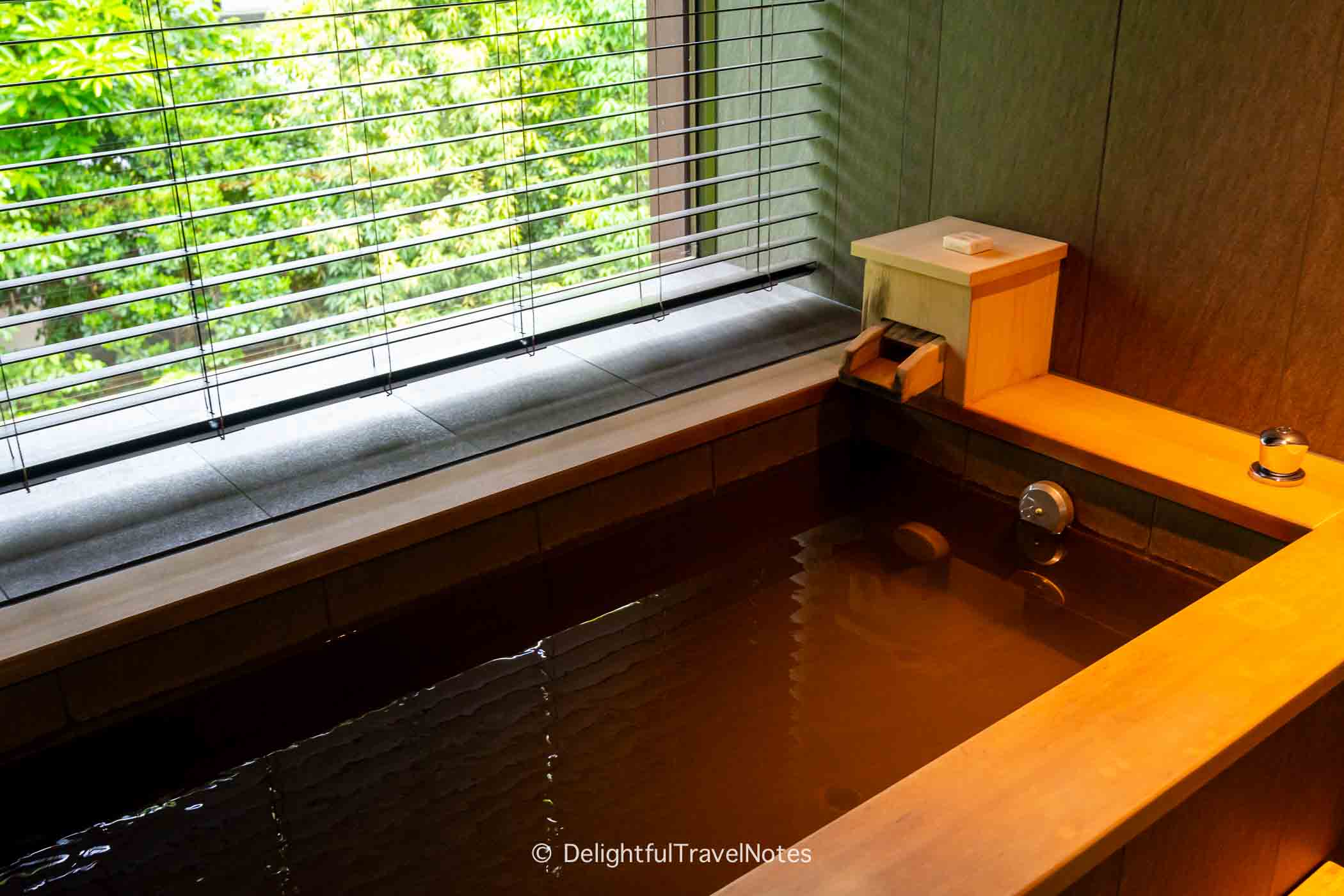
Overall, we enjoyed that everything in the room looked fresh and new with a natural and calming color palette. Bathroom fixtures are good quality and bath products have a gentle relaxing scent. After the trip, we learned that the hotel was designed by Japanese architect Kengo Kuma and Associates, who also designed the Meiji Jingu Museum.
Complementary Champagne Hour
At check-in, Shisui staff mentioned the complementary champagne hour that started at 5 pm for all hotel guests. It is hosted at Cafe Zeze, which is next to the main building but uses a different entrance.
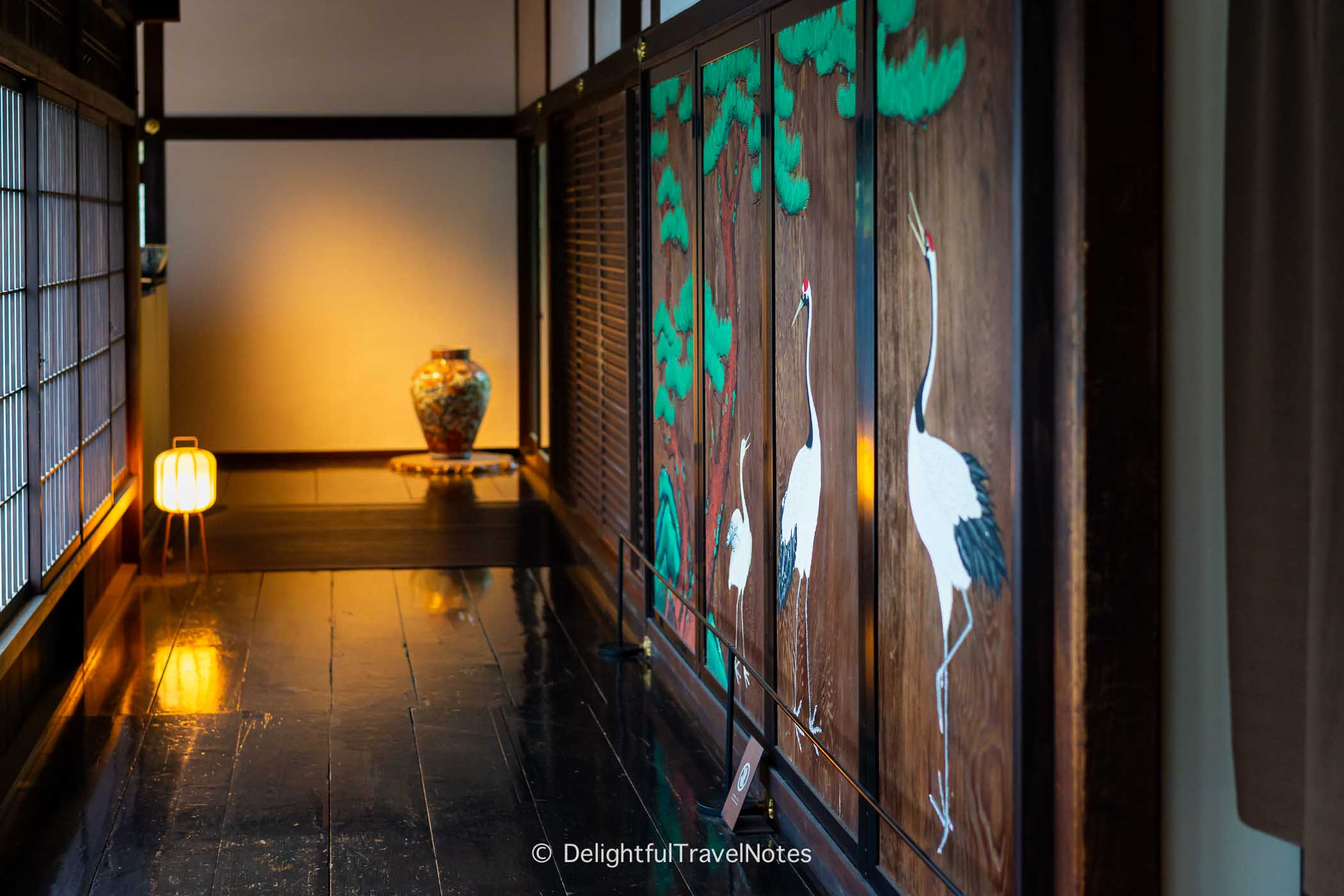
Similar to the hotel restaurant, the indoor area where the champagne hour is hosted features large windows that allow for lush views of the garden from inside, creating a feeling of openness and connection with nature. As I previously mentioned, we loved this feeling of having every moment spent indoors connected to the beauty of the surrounding environment.

The champagne hour seemed very popular with guests, as many tables were occupied when we arrived. The staff were all smiling and welcoming, and they led us to a vacant table. The champagne was served with some small snacks, and they also offered refills for the champagne. We enjoyed the drinks, and one of the options was a non-alcoholic sparkling wine.
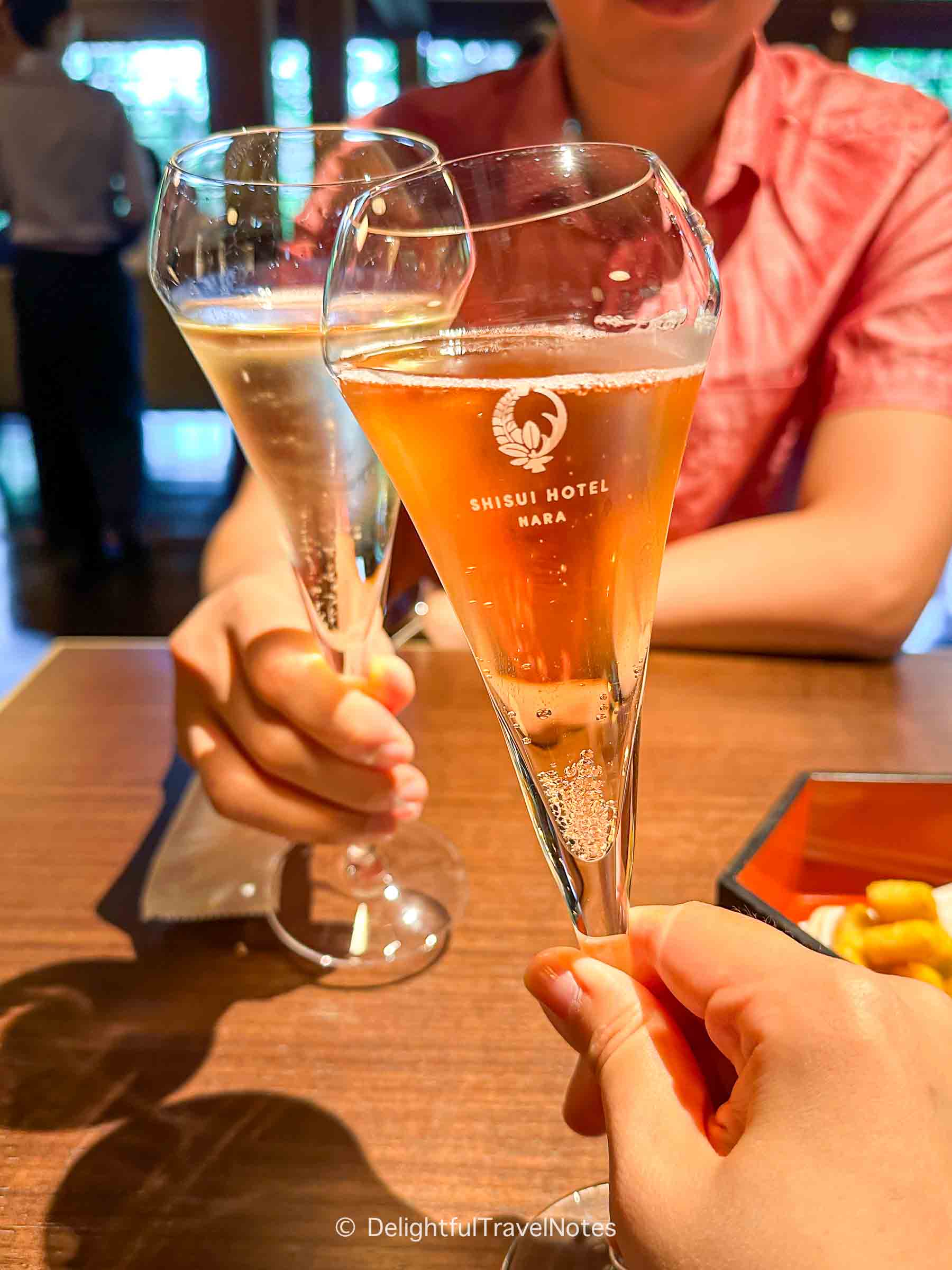
Breakfast at Shisui Nara
The next day, we woke up early at 7 am and took a walk to Todai-ji as we wanted to see it without the crowds. After spending an hour outside, we returned to Shisui for breakfast.
There wasn’t a choice for breakfast, as everyone was served a Japanese breakfast set. We always choose Japanese breakfast when traveling in Japan anyway. As I mentioned in my post about breakfast options in Japan, a set meal isn’t necessarily worse than a buffet. The food is often more beautifully plated, and you don’t have to think too much about what to eat first thing in the morning — the chef makes the decision for you.
Staff gave us an English translation for the breakfast meal and asked if we would like to have rice or roasted tea porridge, a signature breakfast dish of Nara. We always loved trying local specialities, so tea porridge it was.
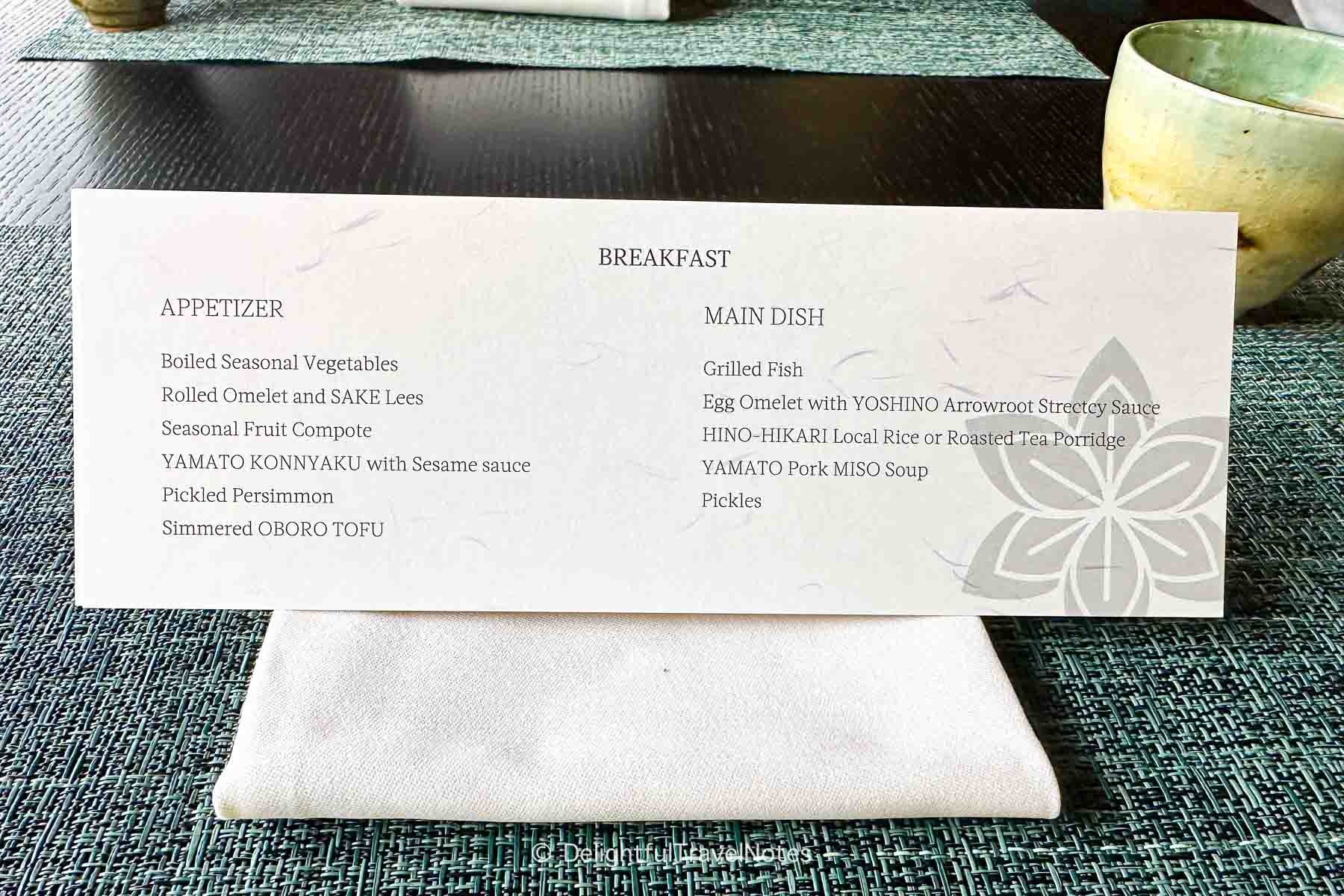
We were first served a box of refreshing small appetizer dishes. The simmered tofu was particularly delicious. I wasn’t sure why the fruit compote was included in the appetizer box, so I left it for the end of the meal as there were no other fruits or desserts offered.

Then came the main dish, which displayed the traditional Japanese meal composition known as ichi-ju san-sai, meaning “one soup, three dishes“. The tea porridge was congee cooked in roasted tea, imparting it with a fragrant hojicha-like flavor. We liked it a lot, and even learned to cook it at home after returning from our trip :D.
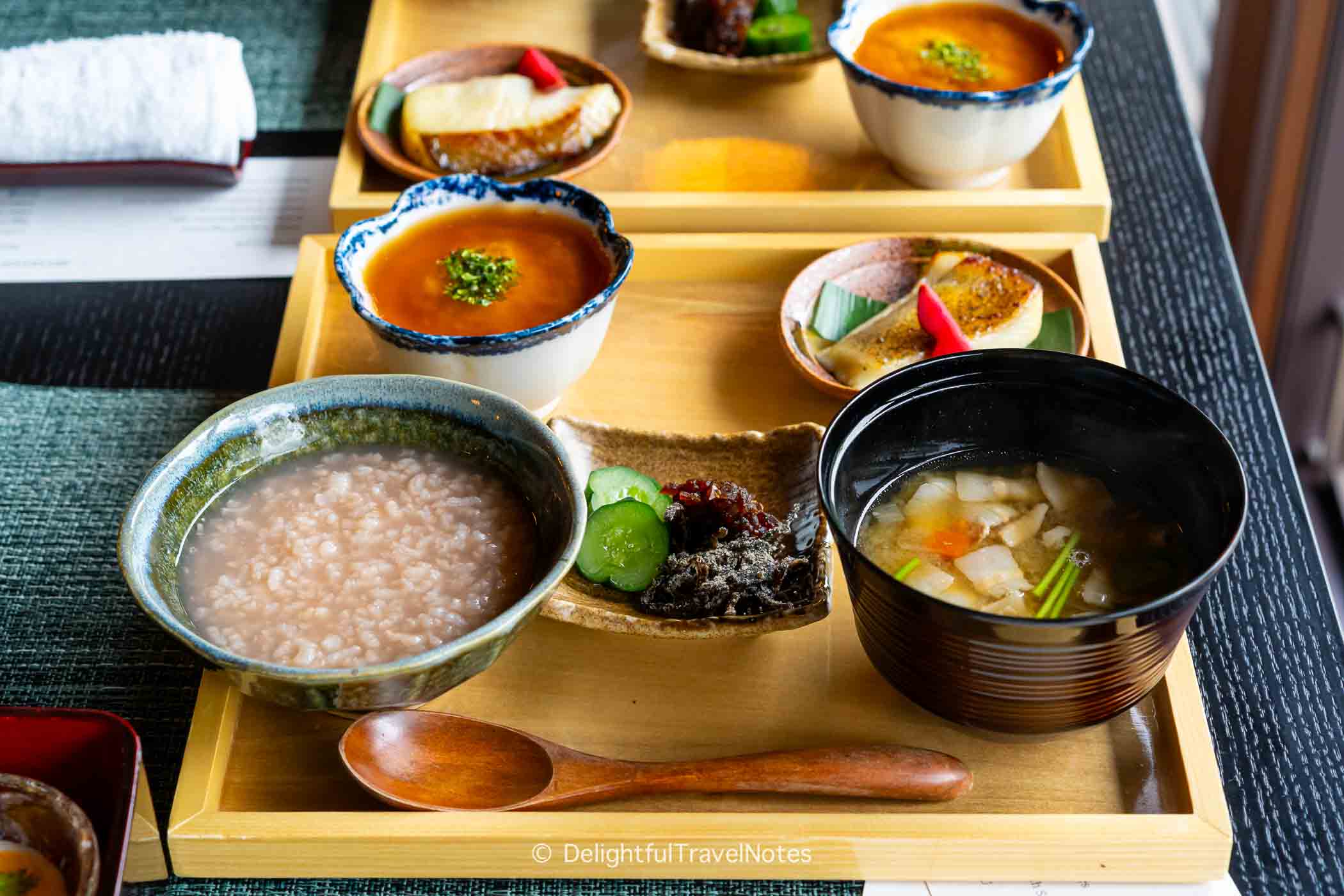
Everything else in the main course was well-prepared. The grilled fish was good and the pork miso soup had a very rich and deep flavor. The egg dish was kinda like scrambled eggs in a thickened sauce – I liked it since its soft texture felt really smooth in the mouth and easy on the stomach.
We enjoyed our breakfast both in terms of taste and presentation, as well as the garden view. Staff also asked if we would like to have more porridge or rice. Coffee and tea were available upon request.
Service & Overall Assessment
Compared to the reviews shortly after the hotel opened, the service seems to have significantly improved. Before our arrival date, we received an email from the hotel offering assistance with dinner reservations. During the stay, granted we didn’t need any special help, we experienced no communication issues. Turn down service was done and additional soap was provided as we requested before heading out for dinner at La Terrasse.
The gentleman in the management team was very pleasant to talk to. He also came to see us on our way out and gave us some helpful pointers for navigating Kintetsu Nara Station.
In the end, the stay was pretty relaxing which was needed after the crazy days we had in Osaka. It seems most of the guests were Japanese, which wasn’t really a surprise as most international tourists just take a day trip to Nara from Osaka or Kyoto. If you decide to spend a night in Nara, we definitely recommend checking out Shisui.
In case the Shisui Nara is over your budget, check out the Setre Naramachi (Booking.com | Agoda.com). We also had good experience there.
Check Prices & Availability
Booking.com Agoda.com

Explore More
The Thousand Kyoto Review: Wonderful Hotel Right Next To Kyoto Station
How To Plan An Amazing Trip to Kyoto (Beyond General Japan Travel Tips)
Top Crowded Attractions in Kyoto and How to Avoid the Masses